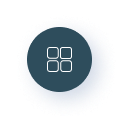Myron Carvalho
Understanding Door Handle Mechanism: Types, Functions, and Maintenance
Door handles are an often-overlooked component of our lives, yet they play a vital function in the performance and security of our homes and offices. While their main function is to provide gain access to, the hidden systems can differ considerably, affecting how they work and their longevity. This short article will dive into various kinds of door handle systems, their functions, and vital maintenance tips.
Types of Door Handle Mechanisms
Door handles come in a number of designs and systems, each matched for different purposes. Here are the most common types:
1. Lever Handle Mechanisms
Frequently seen in residential and commercial settings, lever handles are popular due to their ease of usage. They include a lever that, when lowered, runs a latch or bolt. Lever handles can be spring-loaded or based upon a more intricate mechanism:
Spring-Loaded Lever Handles: Utilize a spring to return the lever to its initial position.Locked Lever Handles: Feature an integrated locking mechanism, providing increased security.2. Knob Handle Mechanisms
Knob handles are a traditional choice, characterized by a round handle that should be turned to operate the lock. While they can be visually pleasing, they sometimes present ease of access issues, specifically for kids or people with impairments. There are 2 main types:
Single-Cylinder Knob Handles: Operated by turning the knob and typically need a secret for locking.Double-Cylinder Knob Handles: Use a key on both sides, making them more safe however less hassle-free in emergency situations.3. Push-Pull Mechanisms
Common in commercial buildings, push-pull handles provide a simple methods of accessing a space without the need for twisting or turning. These handles typically include an easy rod mechanism that engages a lock when pushed or pulled.
4. Electronic and Smart Door Handles
With the increase of technology, electronic door handles have actually acquired popularity, featuring keypads, biometric scanners, or wise connectivity. These innovative systems provide increased security and convenience, allowing users to unlock doors utilizing codes, fingerprints, or mobile apps.
5. Mortise Locks
Mortise locks incorporate the door handle mechanism within a pocket cut into the edge of the door. This design enables a more robust locking system and is frequently used in high-end residential and commercial applications. Mortise locks generally offer deadbolts for included security.
6. Rim Locks
Rim locks are mounted on the surface area of the door, making installation easier than mortise locks. They often accompany knob or lever handles and offer basic security functions suitable for internal doors or secondary entryways.
How Door Handle Mechanisms Work
Understanding how door handle systems function needs some knowledge of their internal parts. The majority of systems operate on the principle of a lock or bolt that secures or opens the door. Here's a streamlined breakdown:
Latch Bolt: The primary component that engages with the door frame to keep the door closed. When the handle is turned or pushed, the latch bolt pulls back, enabling the door to open.Strike Plate: This is a metal plate attached to the door frame, which the lock bolt protects into when the door is closed.Escutcheon Plate: The ornamental plate that normally surrounds the door handle, hiding the screws and giving the door an ended up appearance.Cylinder: In locking mechanisms, the cylinder is where a secret is placed to turn and secure or unlock the door.Maintenance Tips for Door Handle Mechanisms
Regular maintenance makes sure that door handle systems function smoothly and last longer. Here are some vital maintenance tips:
Clean Handles and Locks: Use a microfiber fabric to wipe down door handles regularly. Dust and dirt can accumulate in the mechanism, triggering it to jam.Lubricate Moving Parts: Every six months, use a silicone-based lube to the moving parts of the mechanism to make sure smooth operation. Avoid utilizing grease, which can draw in dirt.Inspect for Tightness: Ensure screws and bolts are tight. Loose handles can cause wear on internal parts and may require replacement sooner than expected.Inspect for Wear and Tear: Regularly check handles for indications of wear, such as scratches, dents, or corrosion. Changing worn-out parts quickly can avoid more significant issues down the line.Test Locks: If the door handle features a locking mechanism, check that the lock runs correctly. If it jams often, it may require to be lubed or changed.Regularly Asked Questions (FAQs)1. What is the most common type of door handle mechanism?
The most common types of door handle systems are lever handles and round knobs. Each has its advantages, with lever handles usually being more available.
2. How do I select the right door handle for my home?
Think about aspects such as functionality (interior or exterior), security needs, and aesthetic preferences when choosing a door handle. Likewise, consider the door material and thickness for compatibility.
3. Can I set up a door handle myself, or should I employ a professional?
Numerous door handles can be installed with fundamental tools and DIY abilities. However, if you're uncomfortable dealing with door hardware or have distinct specs, working with a professional is advisable.
4. How frequently should I keep my door handle mechanisms?
Routine maintenance must happen every 6 months, consisting of cleansing, lubrication, and inspection for wear and tear.
5. What should I do if my door handle is sticking or jamming?
If a door handle is sticking or jamming, it may require lubrication or adjustment. Examine for loose screws and guarantee the latch bolt is lined up properly. If issues continue, consider seeking advice from a professional.
Door handle mechanisms are essential to the security and ease of access of our areas. By understanding the various types and how they work, property owners and companies can make educated choices regarding their local door handle repair hardware. Regular maintenance is important to make sure these systems operate efficiently and remain reliable for several years to come. Whether going with standard designs or advanced wise innovation, selecting the ideal door handle is a financial investment in security and convenience.
Door handles are an often-overlooked component of our lives, yet they play a vital function in the performance and security of our homes and offices. While their main function is to provide gain access to, the hidden systems can differ considerably, affecting how they work and their longevity. This short article will dive into various kinds of door handle systems, their functions, and vital maintenance tips.
Types of Door Handle Mechanisms
Door handles come in a number of designs and systems, each matched for different purposes. Here are the most common types:
1. Lever Handle Mechanisms
Frequently seen in residential and commercial settings, lever handles are popular due to their ease of usage. They include a lever that, when lowered, runs a latch or bolt. Lever handles can be spring-loaded or based upon a more intricate mechanism:
Spring-Loaded Lever Handles: Utilize a spring to return the lever to its initial position.Locked Lever Handles: Feature an integrated locking mechanism, providing increased security.2. Knob Handle Mechanisms
Knob handles are a traditional choice, characterized by a round handle that should be turned to operate the lock. While they can be visually pleasing, they sometimes present ease of access issues, specifically for kids or people with impairments. There are 2 main types:
Single-Cylinder Knob Handles: Operated by turning the knob and typically need a secret for locking.Double-Cylinder Knob Handles: Use a key on both sides, making them more safe however less hassle-free in emergency situations.3. Push-Pull Mechanisms
Common in commercial buildings, push-pull handles provide a simple methods of accessing a space without the need for twisting or turning. These handles typically include an easy rod mechanism that engages a lock when pushed or pulled.
4. Electronic and Smart Door Handles
With the increase of technology, electronic door handles have actually acquired popularity, featuring keypads, biometric scanners, or wise connectivity. These innovative systems provide increased security and convenience, allowing users to unlock doors utilizing codes, fingerprints, or mobile apps.
5. Mortise Locks
Mortise locks incorporate the door handle mechanism within a pocket cut into the edge of the door. This design enables a more robust locking system and is frequently used in high-end residential and commercial applications. Mortise locks generally offer deadbolts for included security.
6. Rim Locks
Rim locks are mounted on the surface area of the door, making installation easier than mortise locks. They often accompany knob or lever handles and offer basic security functions suitable for internal doors or secondary entryways.
How Door Handle Mechanisms Work
Understanding how door handle systems function needs some knowledge of their internal parts. The majority of systems operate on the principle of a lock or bolt that secures or opens the door. Here's a streamlined breakdown:
Latch Bolt: The primary component that engages with the door frame to keep the door closed. When the handle is turned or pushed, the latch bolt pulls back, enabling the door to open.Strike Plate: This is a metal plate attached to the door frame, which the lock bolt protects into when the door is closed.Escutcheon Plate: The ornamental plate that normally surrounds the door handle, hiding the screws and giving the door an ended up appearance.Cylinder: In locking mechanisms, the cylinder is where a secret is placed to turn and secure or unlock the door.Maintenance Tips for Door Handle Mechanisms
Regular maintenance makes sure that door handle systems function smoothly and last longer. Here are some vital maintenance tips:
Clean Handles and Locks: Use a microfiber fabric to wipe down door handles regularly. Dust and dirt can accumulate in the mechanism, triggering it to jam.Lubricate Moving Parts: Every six months, use a silicone-based lube to the moving parts of the mechanism to make sure smooth operation. Avoid utilizing grease, which can draw in dirt.Inspect for Tightness: Ensure screws and bolts are tight. Loose handles can cause wear on internal parts and may require replacement sooner than expected.Inspect for Wear and Tear: Regularly check handles for indications of wear, such as scratches, dents, or corrosion. Changing worn-out parts quickly can avoid more significant issues down the line.Test Locks: If the door handle features a locking mechanism, check that the lock runs correctly. If it jams often, it may require to be lubed or changed.Regularly Asked Questions (FAQs)1. What is the most common type of door handle mechanism?
The most common types of door handle systems are lever handles and round knobs. Each has its advantages, with lever handles usually being more available.
2. How do I select the right door handle for my home?
Think about aspects such as functionality (interior or exterior), security needs, and aesthetic preferences when choosing a door handle. Likewise, consider the door material and thickness for compatibility.
3. Can I set up a door handle myself, or should I employ a professional?
Numerous door handles can be installed with fundamental tools and DIY abilities. However, if you're uncomfortable dealing with door hardware or have distinct specs, working with a professional is advisable.
4. How frequently should I keep my door handle mechanisms?
Routine maintenance must happen every 6 months, consisting of cleansing, lubrication, and inspection for wear and tear.
5. What should I do if my door handle is sticking or jamming?
If a door handle is sticking or jamming, it may require lubrication or adjustment. Examine for loose screws and guarantee the latch bolt is lined up properly. If issues continue, consider seeking advice from a professional.
Door handle mechanisms are essential to the security and ease of access of our areas. By understanding the various types and how they work, property owners and companies can make educated choices regarding their local door handle repair hardware. Regular maintenance is important to make sure these systems operate efficiently and remain reliable for several years to come. Whether going with standard designs or advanced wise innovation, selecting the ideal door handle is a financial investment in security and convenience.
Made By Tag To Connect
 Italian
Italian
 हिन्दी
हिन्दी
 Arabic
Arabic
 Chinese
Chinese
 English
English
 French
French
 German
German
 Portuguese
Portuguese
 Russian
Russian
 Spanish
Spanish
 Turkish
Turkish
 Vietnamese
Vietnamese

